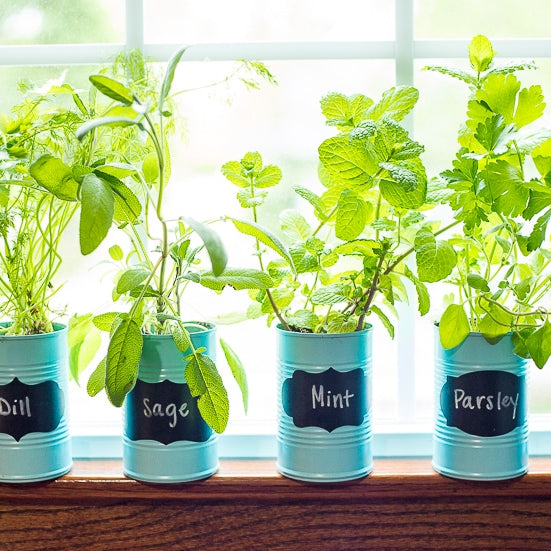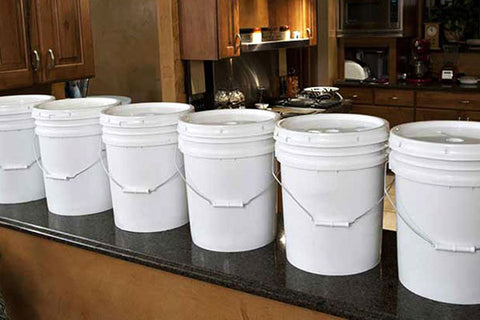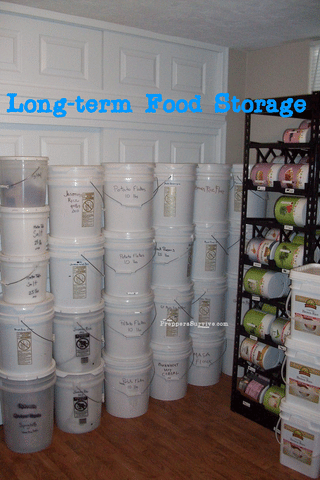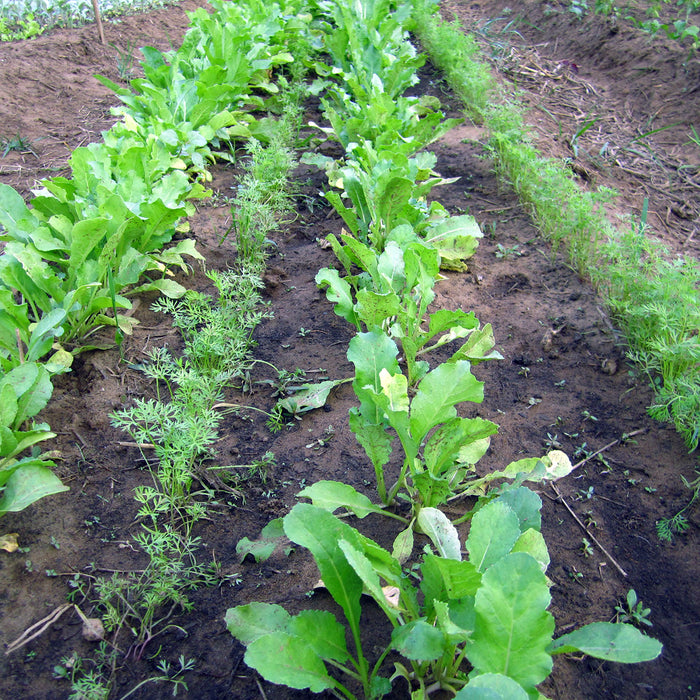

How To Store Dry Pasta Long Term: Complete Guide
Dry pasta is one of the most versatile and practical foods to store for emergencies. It is easy to prepare, has a long shelf life, and can provide much-needed sustenance during times of crisis. But how long can you really store dry pasta? Which types of pasta are best for long-term storage? And how can you ensure that your pasta stays fresh and edible for years to come? In this article, we will explore these questions and provide you with all the information you need to successfully store dry pasta for the long haul.

First, let's talk about shelf life. Dry pasta is one of the most shelf-stable foods out there, and when stored properly, it can last for decades. In fact, some sources suggest that dry pasta can remain good to eat for over 25 years! Of course, this assumes that the pasta is stored in optimal conditions, which we will discuss in more detail later. But even without any special storage methods, dry pasta has a long shelf life. According to most studies, semolina pasta stored in its original packaging in a pantry can last for approximately 2 to 3 years past its "best by" date. This means that if you have unopened packages of pasta sitting in your pantry, you can rest assured that they will be safe to eat for at least a few years.
What type of pasta is best for long term storage?
-
Hard durum wheat pasta: This type of pasta is made from durum wheat, which is a hard, high-protein wheat that produces a firm pasta. Hard durum wheat pasta holds its shape and texture well over time and is less likely to become mushy or gummy. Examples of hard durum wheat pasta include spaghetti, fettuccine, and penne.
-
Egg noodles: Egg noodles are made with wheat flour and eggs and have a slightly richer flavor and softer texture than other types of pasta. They also tend to hold up well over time and are a good option for long-term storage.
-
Whole wheat pasta: Whole wheat pasta is made with whole grain wheat flour and retains more of the wheat's nutrients and fiber than refined pasta. It may not have as long a shelf life as some other types of pasta, but it can still be stored for several months if properly packaged.
What Gluten Free Pasta is best to store Long Term?
-
Rice pasta: Rice pasta is made from rice flour and water and is a popular gluten-free alternative to traditional wheat-based pasta. It tends to hold its shape and texture well over time, making it a good option for long-term storage. Some popular varieties of rice pasta include spaghetti, fusilli, and penne.
-
Corn pasta: Corn pasta is another gluten-free option that can be stored for the long term. It's made from corn flour and water and has a slightly sweeter flavor than other types of pasta. Corn pasta can sometimes become gummy or mushy if overcooked, but if stored properly, it can last for several months.
-
Quinoa pasta: Quinoa pasta is made from quinoa flour and can be a good choice for those looking for a high-protein gluten-free pasta option. It has a slightly nutty flavor and a firm texture that holds up well over time.
But what if you want to store pasta for longer than a few years? In that case, you will need to take some extra precautions to ensure that the pasta stays fresh and edible. The good news is that when protected against moisture, pasta can easily last 10+ years.
Can Dried Pasta Go Bad?
Dry pasta has almost no moisture in it, which means that bacteria and mold are unable to grow. As a result, the pasta will remain safe to eat for years or even decades. However, there are some ways that pasta can go bad. Mold and bacteria growth can occur when pasta is stored in humid or wet conditions, resulting in dark greenish-blue spots on the pasta.
Additionally, heat and oxygen will destroy nutrients (particularly vitamins) over time, which means that the pasta is still safe to eat but won't have as much nutritional value. Some types of pasta also contain natural oils that can go rancid in warm temperatures and when exposed to air. Finally, dry pasta can absorb odors and contaminants from the environment over time, resulting in a musty taste and potentially harmful chemical exposure.
How to Store Pasta Long Term
Dry pasta is a great food item to store for emergencies, as it has a long shelf life and can be stored for up to 10 years or more if stored properly. It is important to note that different types of pasta have varying shelf lives and require different storage methods to keep them fresh for longer periods.
According to the FoodKeeper app, which is developed by the USDA, the shelf life of dry pasta varies depending on the type of pasta. Semolina pasta can last up to 2 to 3 years past its “best by” date when stored in its original packaging in a pantry. However, when protected against moisture, it can last up to 10+ years. Egg pasta, gluten-free pasta, and vegetable pasta also have a long shelf life but could lose their nutritional value or absorb odors and contaminants from the air.
It is important to store pasta properly to extend its shelf life. The original packaging of pasta is not air-tight, and it can allow moisture, odors, and contaminants to enter, making the pasta taste bad. Therefore, it is recommended to repackage pasta for long-term storage.
To store pasta long term, follow these steps:
-
Get Your Supplies:
- BUCKETS – You want food grade buckets.
- MYLAR BAGS – 20″ x 30″ bag
- OXYGEN ABSORBERS – 2000 cc for a 5 gallon bucket
- SEALER – You can use a hand-held sealer, iron, or flat-iron.
- RUBBER MALLET – Used to beat the lid on the bucket.
- BUCKET OPENER – Helps take the lid off when you’re ready.
- BULK FOOD – To fill your buckets.
-
Remove the pasta from its original packaging.
When it comes to storing pasta for the long term, it's essential to remove the pasta from its original packaging. The primary reason for this is that the original packaging is not airtight, which means it can allow moisture, odors, and contaminants to seep through. Over time, this can cause the pasta to lose its taste, texture, and nutritional value.
Additionally, pasta in its original packaging can also absorb chemicals and flavors from the packaging, which can affect its taste and quality. Studies have shown that some types of pasta can even absorb the glue used in the packaging, which can be harmful to your health if consumed.
Therefore, it is recommended that you transfer your pasta into airtight containers or storage bags to help keep it fresh for longer. When selecting containers, look for ones that are airtight and made from materials that are safe for food storage, such as glass or food-grade plastic.
-
Transfer it to an air-tight container.
After removing the pasta from its original packaging, it's essential to transfer it to an airtight container to maintain its quality and extend its shelf life. An airtight container will prevent moisture, odors, and contaminants from entering and spoiling the pasta, ensuring that it remains fresh for an extended period.
It's crucial to choose the right container for storing your pasta. Look for containers that are specifically designed for food storage, and preferably made of food-grade plastic, glass, or metal. Mason jars, plastic or glass containers with tight-fitting lids, and metal canisters are all good options for storing dry pasta.
Once you have the right container, make sure it is completely dry before transferring the pasta to it. Moisture is one of the main enemies of pasta storage, and any moisture trapped inside the container can cause the pasta to spoil. Therefore, ensure the container is clean and dry before transferring the pasta.
When transferring the pasta to the container, try to leave some headspace. The pasta will expand slightly over time, so leaving some room in the container will allow for that expansion. Additionally, it will make it easier to remove the pasta from the container without spilling it. There are several types of storage containers that are popular for storing dry pasta long-term. The durability and longevity of these containers depend on the quality of the container, the material it is made of, and how well it is sealed.
-
Store the pasta in a cool, dry, and dark place.
Avoid storing the pasta in direct sunlight or near sources of heat and moisture, such as stoves, dishwashers, or sinks. This can lead to mold growth, which can spoil the pasta. -
Use oxygen absorbers to remove oxygen from the storage container.
Oxygen can cause rancidity in the oils found in some types of pasta, like whole-grain pasta, which can cause the pasta to go bad quickly. Oxygen absorbers are available online and at some grocery stores. -
Label the container with the date of storage and the expiration date.
This will help you keep track of the pasta's shelf life and ensure that you use it before it goes bad.

Best Storage Containers to Store Pasta Long Term
Mason jars:
Mason jars are popular for storing dry goods because they are affordable, durable, and come in a variety of sizes. They are made of glass and have an airtight seal, which helps to prevent moisture, odors, and contaminants from entering the container. Mason jars can last for several years when stored properly.
Mylar bags:
Mylar bags are made of a metallic polyester film that is lightweight, durable, and flexible. They are popular for storing dry goods because they are moisture and oxygen-resistant, which helps to prevent spoilage. Mylar bags are typically sealed with a heat sealer, which creates an airtight seal. Mylar bags can last up to 25 years when stored in a cool, dry place.
Plastic containers:
Plastic containers are popular for storing dry goods because they are lightweight, affordable, and come in a variety of sizes. They are typically made of high-density polyethylene (HDPE), which is a durable and food-safe plastic. Plastic containers can be airtight, which helps to prevent moisture, odors, and contaminants from entering the container. However, they may not last as long as other storage options because they can crack or warp over time. To prevent your plastic containers from warping, it's best to keep them away from extreme temperature swings.
Food-grade buckets:
Food-grade buckets are made of high-density polyethylene (HDPE) and are designed specifically for storing food. They are popular for storing bulk quantities of dry goods because they are durable and come in larger sizes. Food-grade buckets can be sealed with a gamma lid or airtight lid, which helps to prevent moisture, odors, and contaminants from entering the container. Food-grade buckets can last up to 10 years when stored in a cool, dry place. If you're on a budget: I've found that local wineries use these buckets quite frequently and always have an excess that they are willing to give away. Local restaurants also have a surplus of food grade buckets that pickles and and other bulk food products come in. If money is tight, it's worth checking out these resources in order to save a few dollars.
I recommend the these BPA Free Food Grade Storage Buckets. They have a solid 5 star reviews and they're made in the USA. What's really great about these buckets is their air-tight design that helps keep contents fresh for longer periods. Whether you're storing flour, sugar, pet food, or other dry goods, these buckets are perfect for the job. They even come with a child-resistant button to keep little hands from getting into trouble.

How to Store Pasta in Mylar Bags
Many preppers choose to store their dry goods in mylar bags and then place them into food grade buckets.
Here's an explanation of the process:
Gather your Supplies
You'll need mylar bags, oxygen absorbers, and food grade buckets. You can find all of these items online or at your local home goods store.
Fill the Mylar Bags.
Once you've filled the bag, place one or more oxygen absorbers inside. These will help to remove any oxygen from the bag, which will help prevent spoilage and prolong the shelf life of your food.
How to Seal Mylar Bags
When it comes to sealing mylar bags, there are a couple of different methods you can use depending on the equipment you have available.
One common method is to use a heat sealer for mylar bags. This is a specialized tool that uses heat to melt the mylar bag's opening and seal it shut. To use a heat sealer, start by filling the mylar bag with your dry goods and oxygen absorber(s). Then, place the opening of the bag between the heat sealer's jaws and press down to activate the heat. Hold the jaws closed for several seconds, depending on the thickness of the bag, until the bag has been completely sealed. Repeat this process with any additional bags you need to seal.

If you don't have a heat sealer, you can use a regular clothes iron to seal the bags. To do this, fill the mylar bag with your dry goods and oxygen absorber(s), leaving at least one inch of space at the top of the bag. Fold the top of the bag over twice to create a double layer of mylar. Then, use the iron set on a high temperature to press down on the folded section, making sure to apply even pressure across the entire section of the bag. Hold the iron in place for several seconds to allow the mylar to melt and seal. Repeat this process with any additional bags you need to seal.
Whichever method you choose, it's important to make sure you get a good seal on your mylar bags. This will help to prevent air and moisture from getting inside, which can lead to spoilage and reduce the shelf life of your food. With a little practice and the right equipment, sealing mylar bags is a simple and effective way to store dry goods for the long term.
Doomsday Prepper's Guide: Choose the Right Storage Location for Your Supplies
Place the Mylar Bags into Buckets
Once your bags are sealed, you can place them into the food grade buckets. Make sure to label the buckets with the contents and date so you can easily keep track of what's inside and when you stored it.
Finally, seal the lid on the bucket to create an air-tight seal. This will help to further prevent spoilage and keep your food fresh for months or even years.
Storing dry goods in mylar bags and food grade buckets is a great way to ensure that you have access to food during an emergency or disaster. By following these simple steps, you can create a safe and reliable storage system that will give you peace of mind and help keep you and your family well-fed in any situation.
Do you want to just buy it already packed and stored? Check out these long term food storage options.
By following these steps, you can ensure that your pasta will last for a long time, giving you peace of mind during emergencies.

Sources:
- USDA FoodKeeper app: https://www.foodsafety.gov/keep/foodkeeperapp/index.html
- Preppers Will: https://prepperswill.com/how-to-store-dry-pasta-for-long-term-storage/
Recommended Posts
- How to Build a Bug Out Bag for Kids: Tips and Tricks
- 10 Survival Skills Every Kid Should Know
- Food prices are about to skyrocket even more; Prepare for a 'famine,' followed by housing crash, then equities wipeout - Michael Gayed
- South Threatened by Severe Weather After Texas Tornado Disaster: How to Prepare.
- The Ultimate Guide to Radiation Water Filters: How They Work



